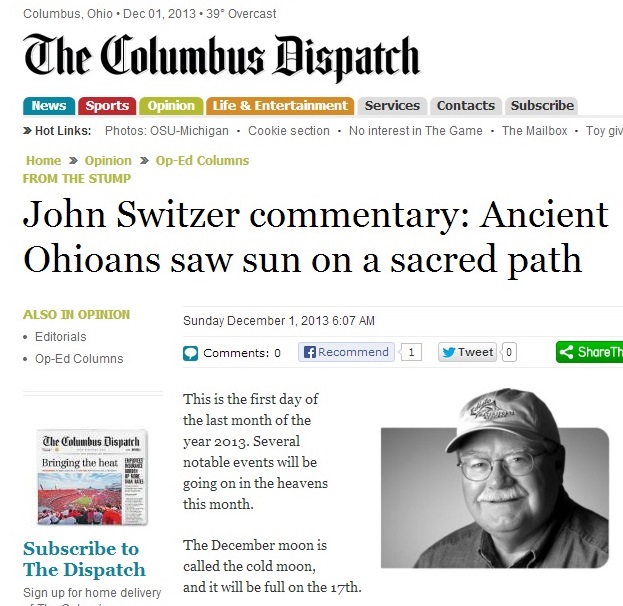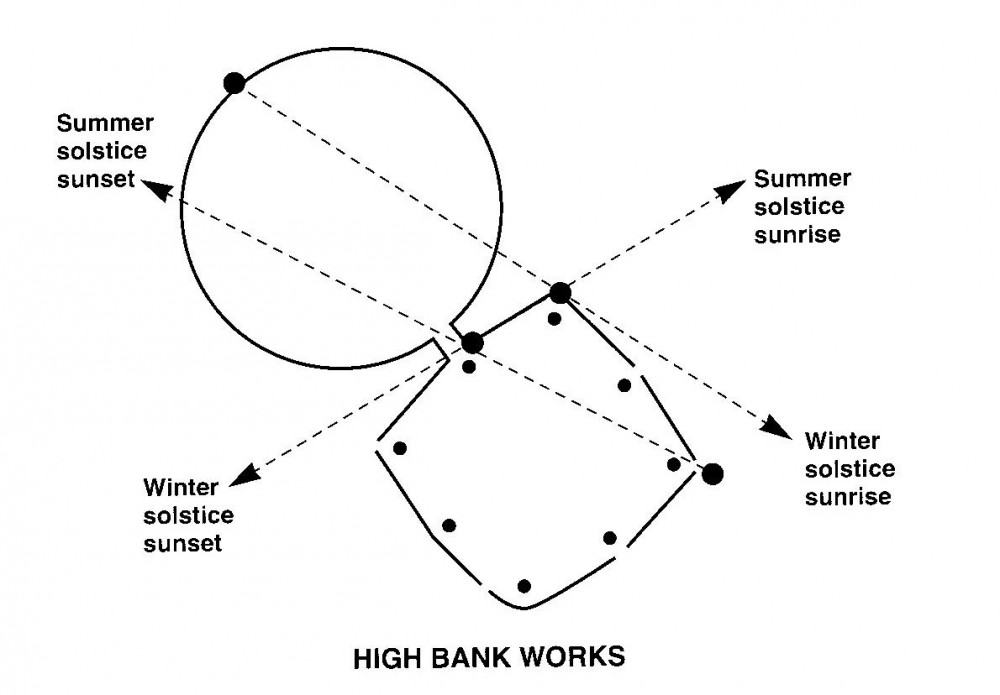 In today’s Columbus Dispatch, columnist John Switzer considers the significance of the winter solstice for Ohio’s ancient cultures.
In today’s Columbus Dispatch, columnist John Switzer considers the significance of the winter solstice for Ohio’s ancient cultures.

Astronomical alignments built into the High Bank Works earthen enclosure based on the research of Ray Hively and Robert Horn of Earlham College.
The winter solstice is one of the key cosmic hinges that signals not so much the end of winter, as that won’t happen for another three months, but the bright promise of winter’s end. It is the time when the Sun ends its southern journey and begins its stately return to the north. Many cultures around the world celebrate the winter solstice and monumental structures, such as Stonehenge in England and a number of Ohio’s Hopewell earthworks, including High Bank Works in Chillicothe and the Marietta Earthworks, encode alignments to the winter and summer solstices in their architecture. For all the differences between the ancient cultures of Ohio and England, the people on both sides of the Atlantic Ocean saw the same sky, felt the same bitter cold of winter, and looked forward to the renewal of life in the spring. Is it any wonder then that both cultures would mark with their sacred architecture the cosmic moment when the tide of winter shifted in the direction of spring?

Stonehenge, one of the world’s most famous ancient monuments, includes astronomical alignments in its architecture.
Brad Lepper